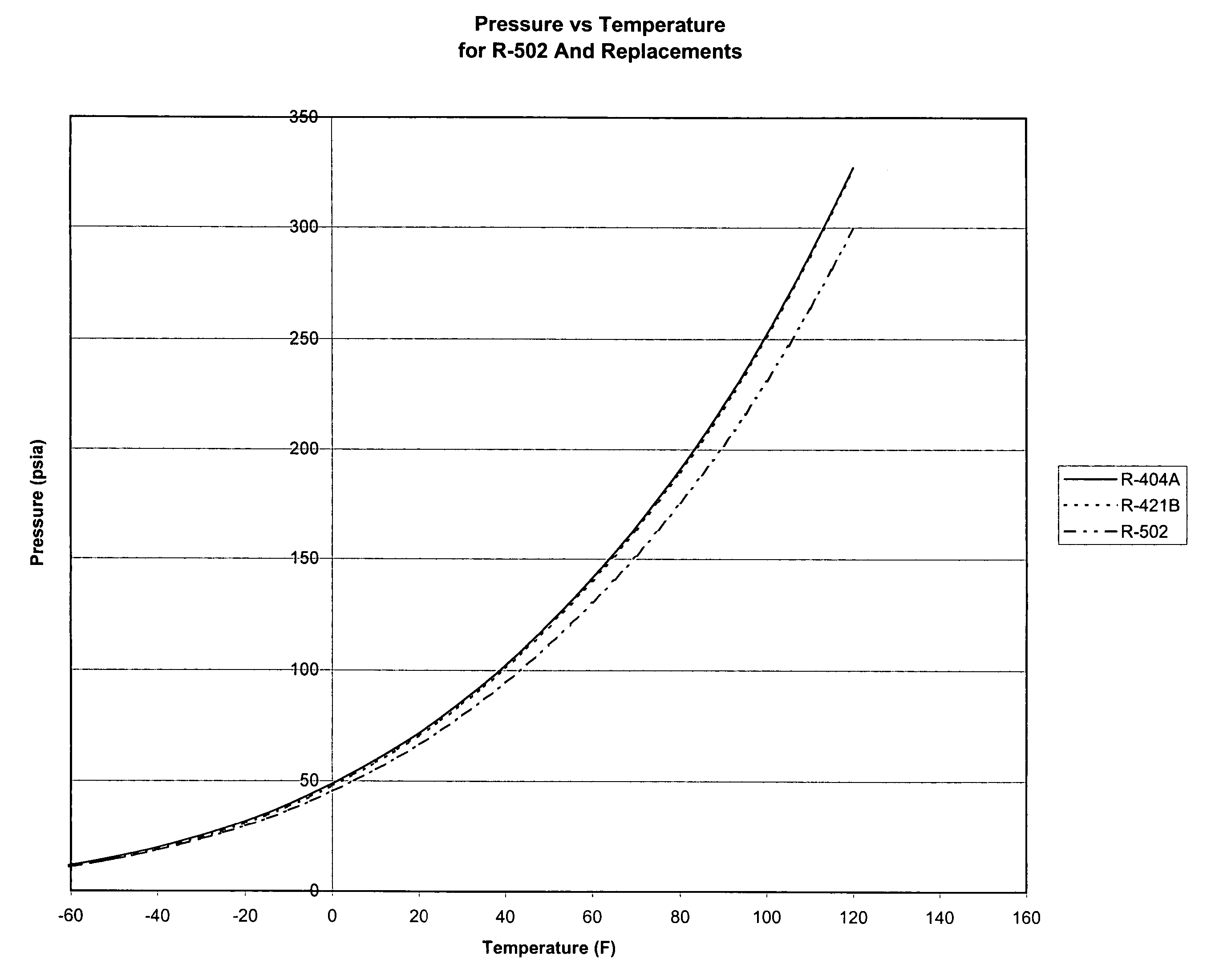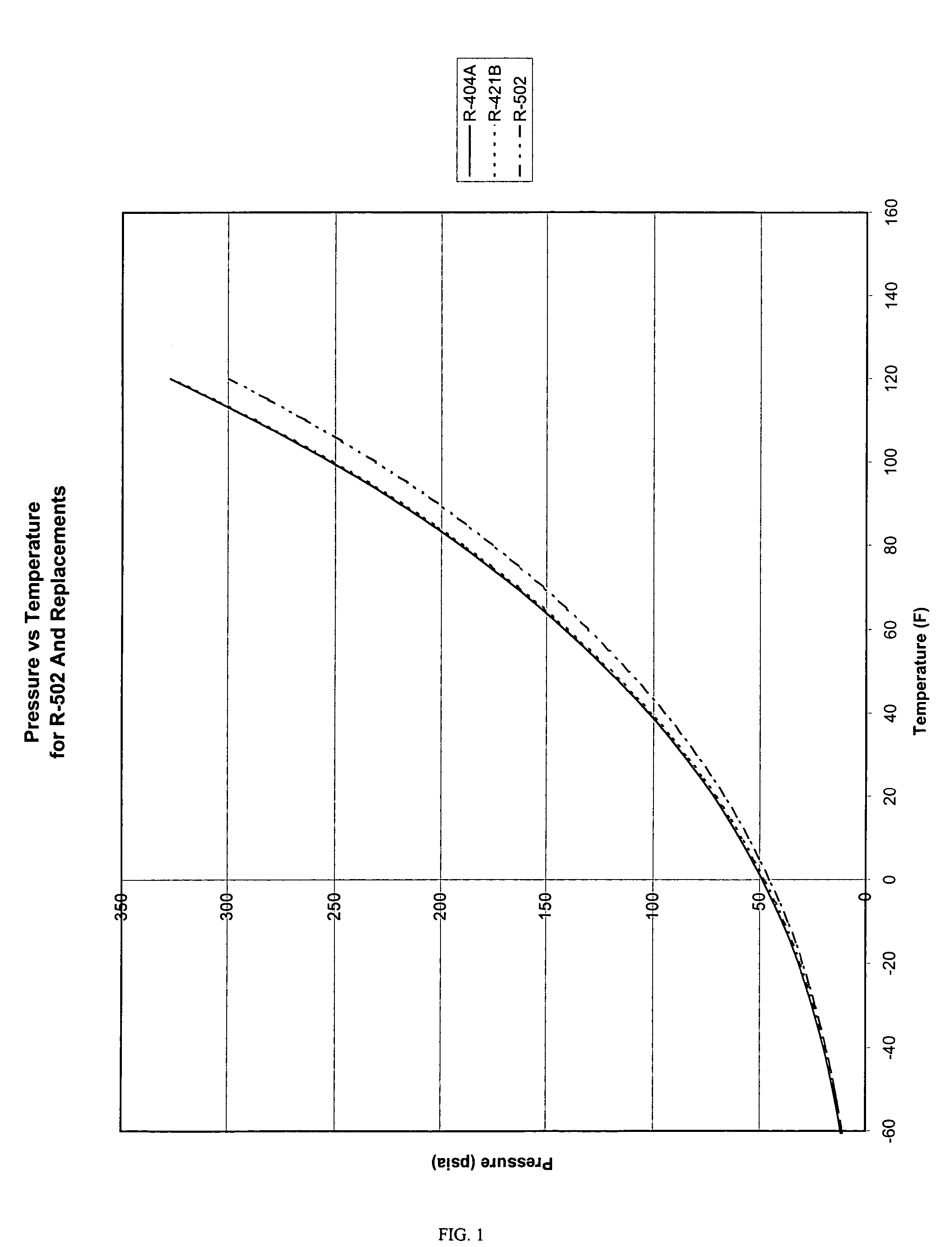Refrigerant for low temperature applications
a low temperature, refrigerant technology, applied in the direction of lubricant composition, indirect heat exchanger, lighting and heating apparatus, etc., can solve the problems of ozone-damaging chemical, ozone-damaging material, and refrigerant r-22 (chlorodifluoromethane) being attacked
- Summary
- Abstract
- Description
- Claims
- Application Information
AI Technical Summary
Benefits of technology
Problems solved by technology
Method used
Image
Examples
example
[0055] Pentafluoroethane and 1,1,1,2-tetrafluoroethane are mixed in a ratio of 85 to 15 weight percent respectively and packaged with a polyol ester based lubricating oil such that the temperature-pressure profile of the pentafluoroethane / tetrafluoroethane mixture is similar to that of Refrigerant R-22 (chlorodifluoromethane), over the normal operating range of air-conditioners. Table 1 summarizes the temperature-pressure profile of the mixture over the range of normal air-conditioner working temperatures, from −60 degree F. to 120 degree F.
[0056]FIG. 1 compares the Pressure (liquid) vs. Temperature profile for the 85 / 15 blend of pentafluoroethane and tetrafluoroethane respectively, to that of R-502 and R-404a replacements.
[0057] Table 1 presents a comparison to not only R-502 but also R-404 and R-408 refrigerants. It can be seen that the present refrigerant mixture approximates well not only the temperature-pressure profile of R-22 in the low temperature range, but also R-404a an...
PUM
 Login to View More
Login to View More Abstract
Description
Claims
Application Information
 Login to View More
Login to View More - R&D
- Intellectual Property
- Life Sciences
- Materials
- Tech Scout
- Unparalleled Data Quality
- Higher Quality Content
- 60% Fewer Hallucinations
Browse by: Latest US Patents, China's latest patents, Technical Efficacy Thesaurus, Application Domain, Technology Topic, Popular Technical Reports.
© 2025 PatSnap. All rights reserved.Legal|Privacy policy|Modern Slavery Act Transparency Statement|Sitemap|About US| Contact US: help@patsnap.com


